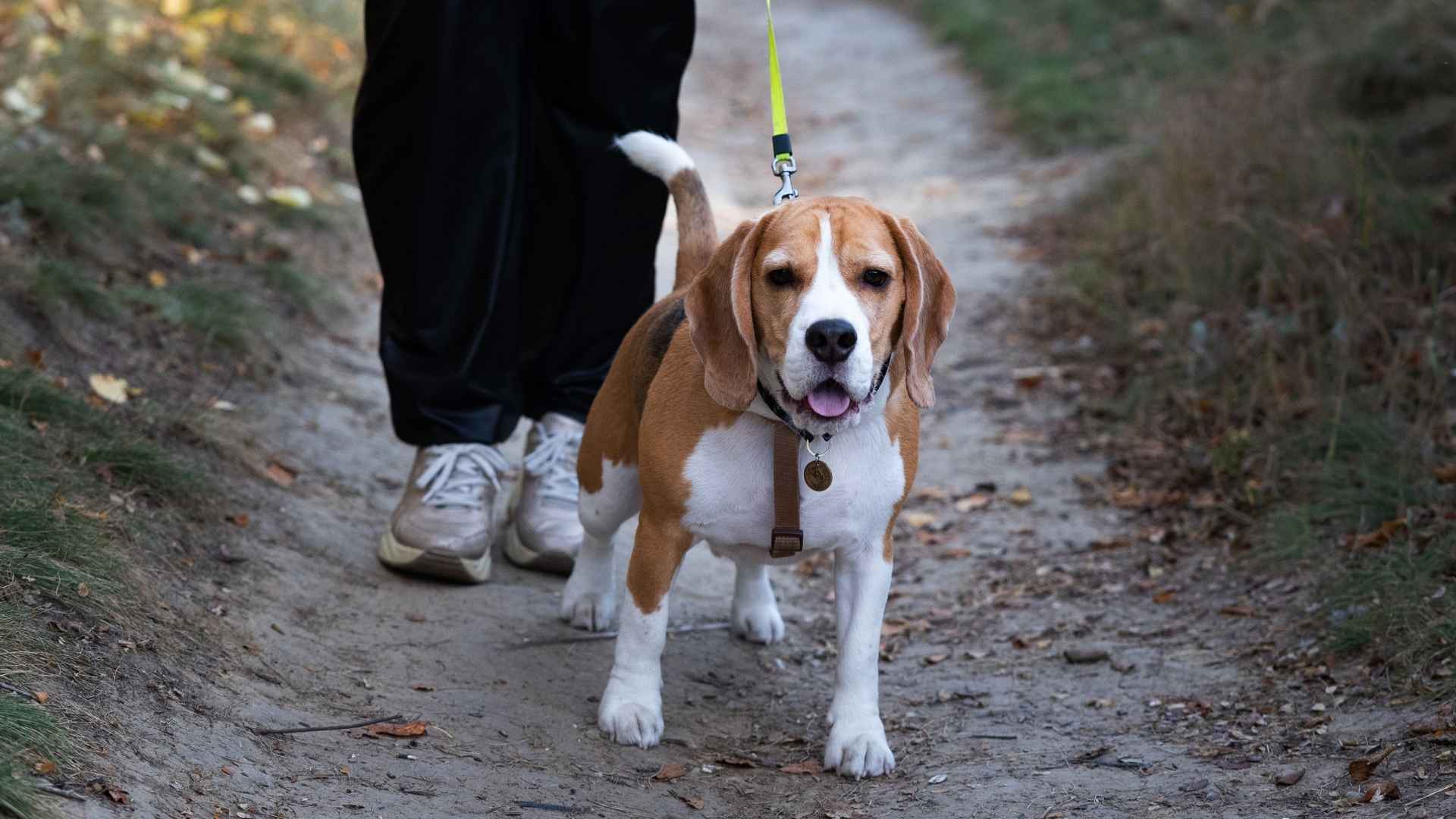Dogs’ uncanny ability to find their way—not just to the nearest fire hydrant but across unfamiliar terrain—has puzzled and impressed people for centuries.
According to a study managed by the American Kennel Club (AKC), researchers tracked 27 dogs across 622 trials in Czech forests and found that roughly one‑third of the dogs didn’t simply retrace their scent trail. Instead, they began their return with a short compass run—about 20 meters along a north‑south axis—before choosing a novel, more direct route home.
Many dogs navigate using a kind of internal compass—sensing Earth’s magnetic field—paired with their incredible noses. Rather than relying solely on memory or smell, they combine sensory input in ways humans can only dream of.
This compass‑aided navigation isn’t just anecdote—it’s backed by data. And even though each dog’s brain architecture varies with breed, the magnetic sense and navigation skills seem widespread across the species. It’s less about specific breeds and more about the orientation instincts all dogs share.
Dog breeds with the best sense of direction
Here are the most common dog breeds:
1. Beagle
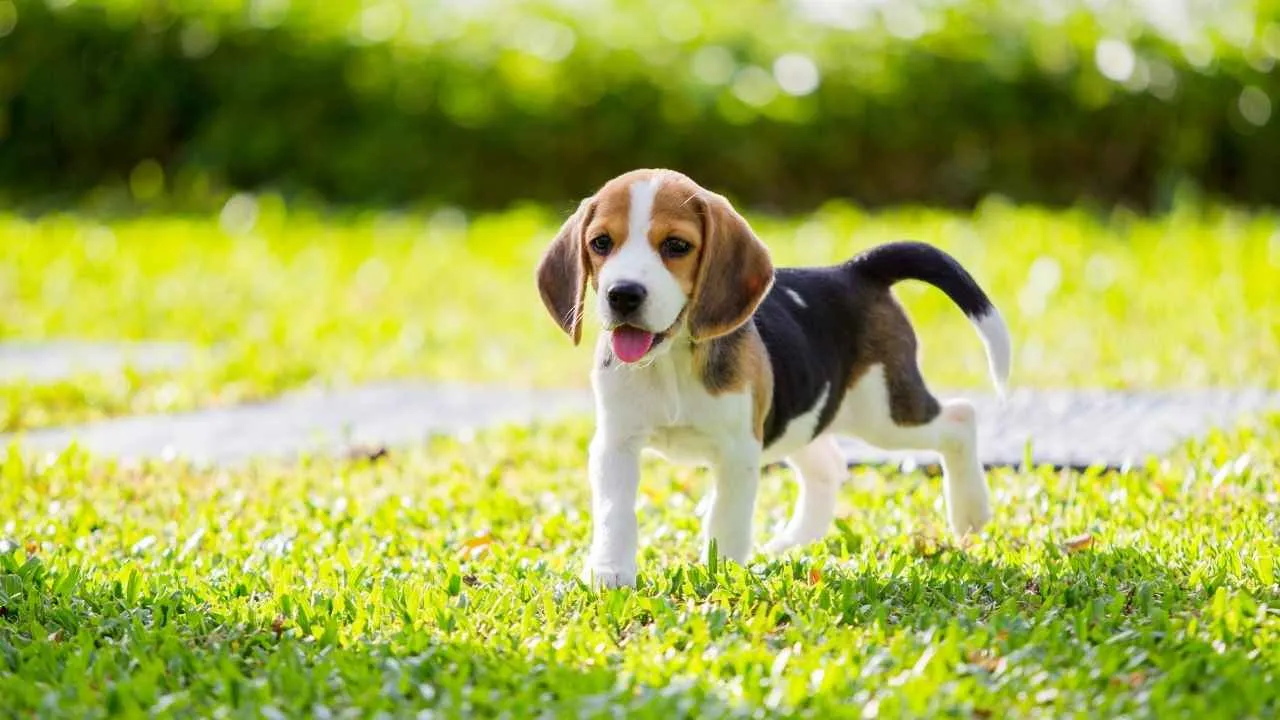
The Beagle is compact, tough, and built to follow its nose. According to Britannica, they were originally bred to hunt rabbits. To do that, they developed a powerful combination of spatial awareness, scent memory, and navigation instincts.
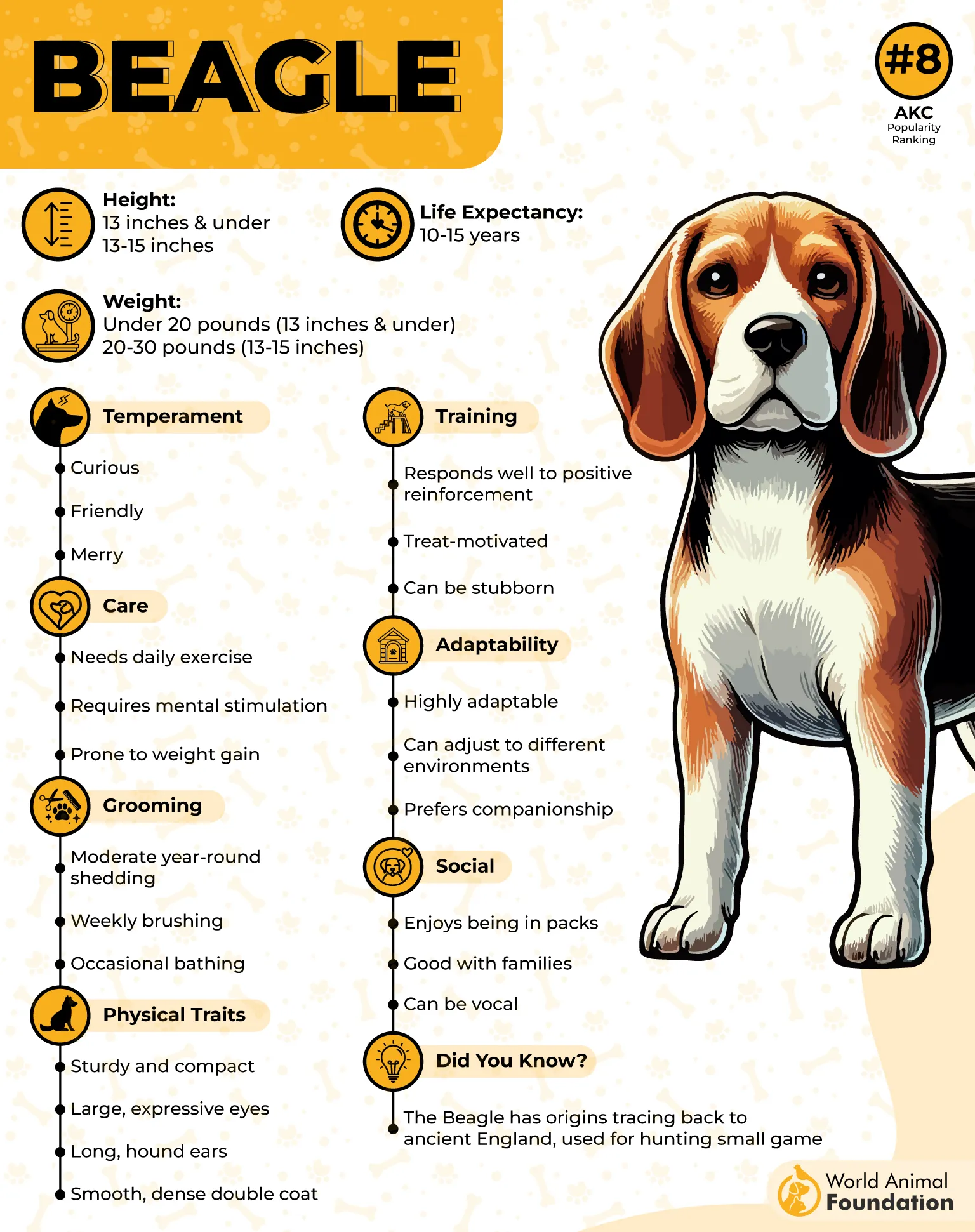
Their sense of smell is among the strongest in the dog world. This scent hound thrives in detection work, especially at airports where the Beagle Brigade inspects luggage for hidden food items.
With 220 million scent receptors and a natural curiosity, Beagles stick to trails with impressive stamina. Their white-tipped tails help keep them visible in dense cover. Beagles are lively, affectionate, and love working with human companions—but don’t expect them to quit mid-hunt.
|
Trait |
Details |
|---|---|
|
Bark |
Deep, baying howl when tracking |
|
Energy |
Medium-high; thrives with regular activity |
|
Intelligence |
Sharp nose, independent thinker |
2. Bloodhound
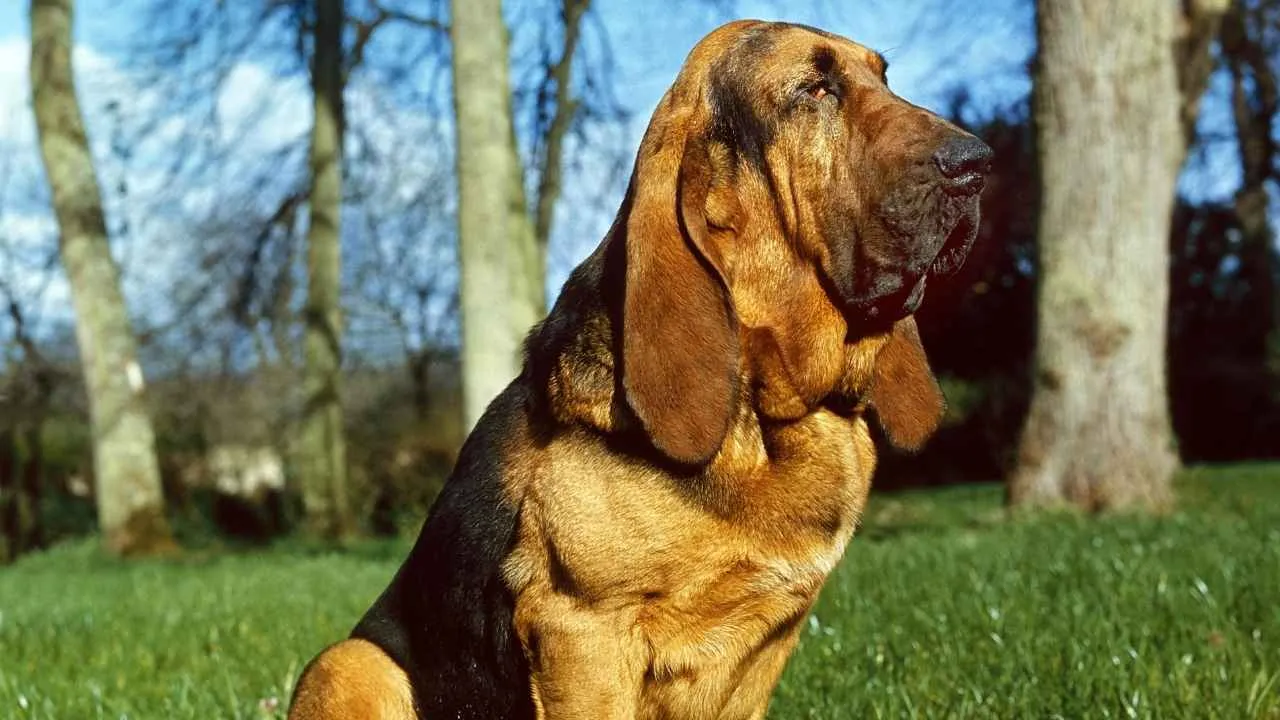
The Bloodhound isn’t just a scent hound—it’s the gold standard. With over 300 million scent receptors and a structure built to trap odor molecules, this breed can track across terrains, even days after the trail has gone cold.
According to PetMD, Bloodhounds are often called in as rescue dogs when identifying exact human scent is critical.
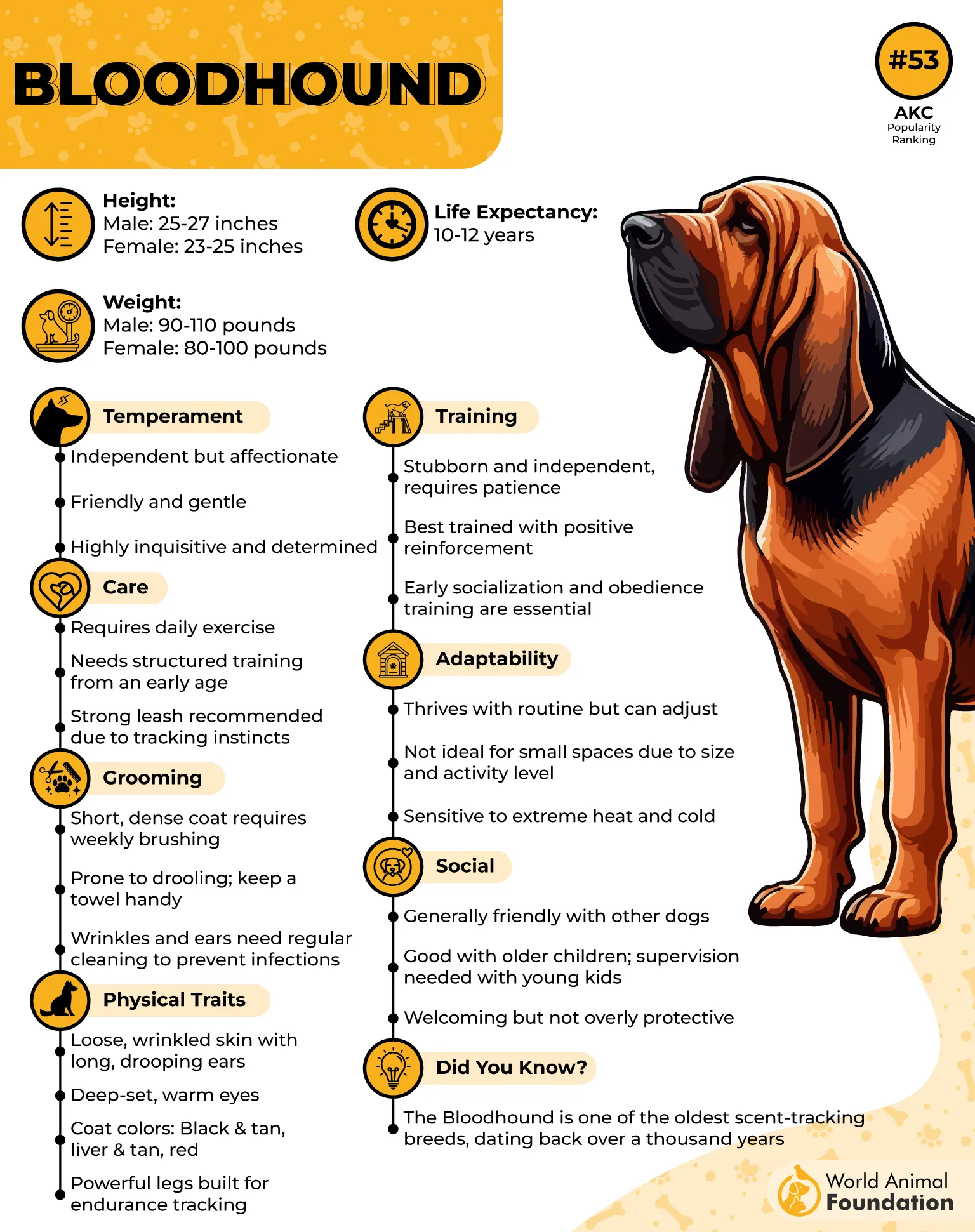
Their independence, slow gait, and ability to assess trails over long distances make them invaluable to search teams, especially in wilderness zones. Their friendly, almost aloof demeanor means they’re not built for guarding. They’re gentle with kids, low-key indoors, but will obsess over a trail like it’s life or death.
|
Trait |
Details |
|---|---|
|
Bark |
Deep, resonant howl; frequent vocalizations when working scent |
|
Intelligence |
High scent discrimination but selectively obedient |
|
Best For |
Tracking, SAR, and scent identification in law enforcement |
|
Unique Trait |
Follows scent trails over 12 days old; droopy skin aids scenting |
3. German Shepherd
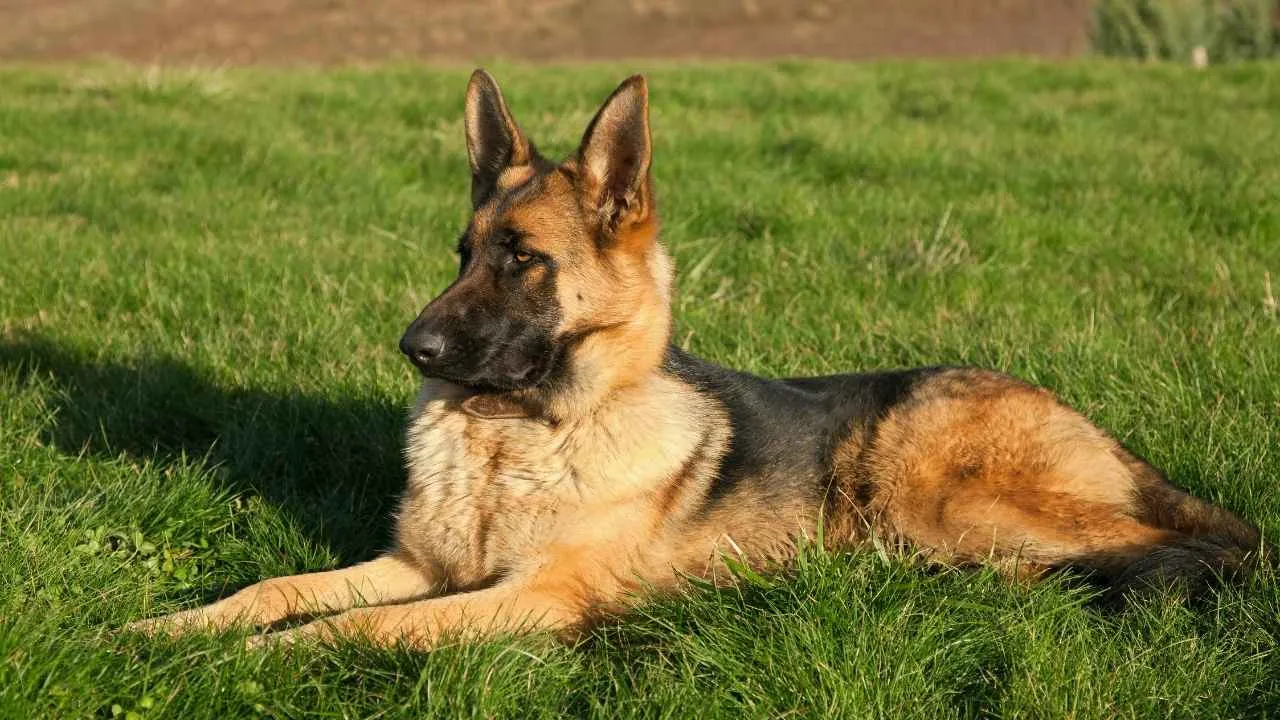
German Shepherds are known for their brainpower and adaptability in high-pressure environments. Their ability to assess threats, navigate unstable debris, and maintain focus through chaos makes them a top pick for search and rescue work in disaster zones.
German Shepherds were bred for complex working roles—herding, guarding, search and rescue, and military service—all of which demand high spatial awareness and strong navigation skills.

A dog that can’t find its way back to the flock or handler isn’t much help in the field. Over generations, selective breeding sharpened their problem-solving, tracking, and orienting abilities.
|
Trait |
Details |
|---|---|
|
Bark |
Sharp, commanding; used to alert handlers and assert control |
|
Energy |
High; thrives with both physical and mental challenges |
|
Intelligence |
Problem-solving ability and task retention under stress |
|
Unique Trait |
First breed used as guide dogs; excels in fast-paced decision-making |
4. Basset Hound
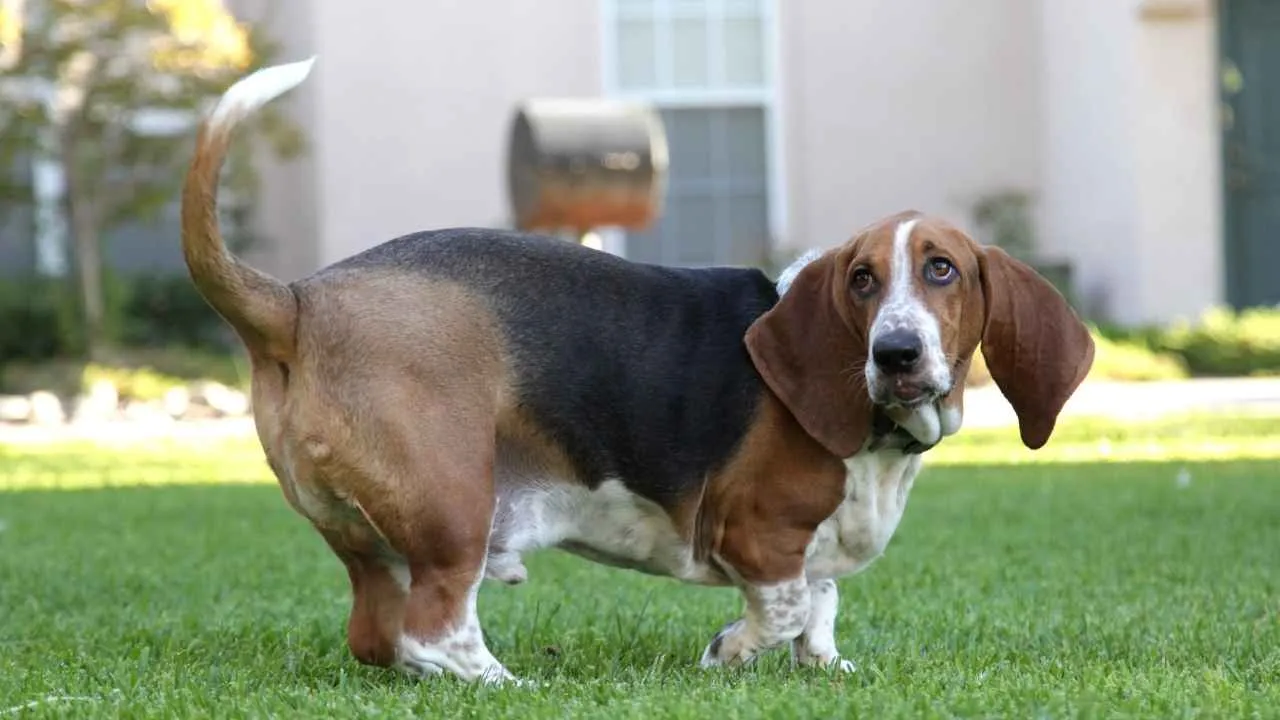
The Basset Hound is one of the most iconic dog breeds when it comes to slow, precise tracking. Bred for hunting in dense terrains, their droopy skin and low-slung build help them trap and analyze smell particles better than most. What they lack in speed, they make up for in accuracy, making them valuable in quiet, methodical rescue missions.
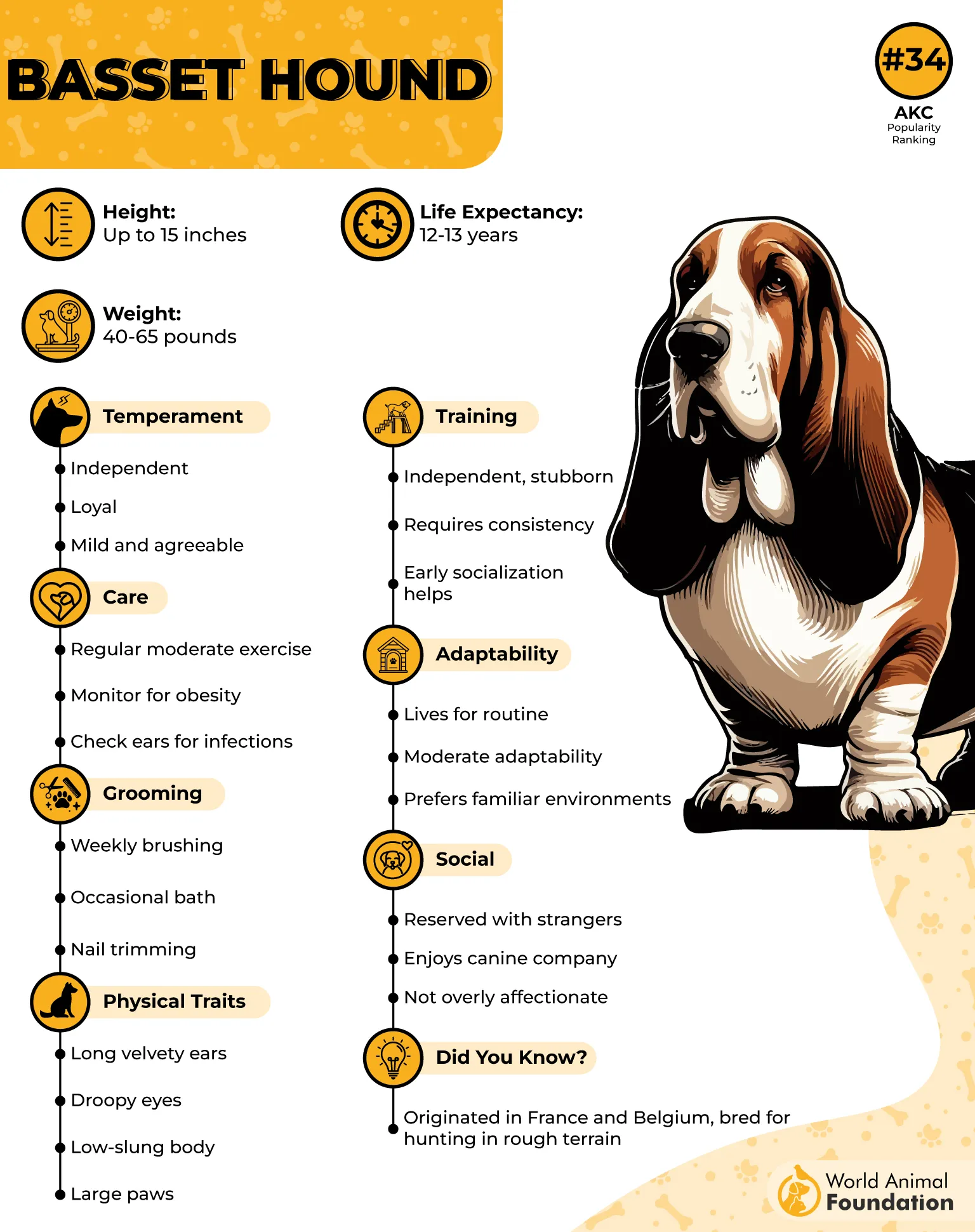
The Basset Hound is often celebrated for having one of the best senses of direction, and it all comes down to three things: their exceptional scenting ability, their close-to-the-ground build, and their tenacious tracking instinct.
Despite their sleepy look, they’re quick to learn and naturally adapt to long-distance routes. As pets, they are friendly and grounded, acting as dependable companions in family or field settings.
|
Trait |
Details |
|---|---|
|
Bark |
Low and echoing, especially vocal when following a trail |
|
Best For |
Patient tracking, methodical rescue work, and family SAR environments |
|
Unique Trait |
Specialized for low-height scent capture; thrives on complex routes |
5. Saint Bernard

Saint Bernards are legendary in search and rescue missions, especially those in the Swiss Alps, where icy terrain demands endurance and strength. Their massive build, thick coats, and instinctual response to buried victims make them ideal for snow-related rescue.
With a strong sense of direction and an ability to remain calm in harsh conditions, they track with purpose, not panic.
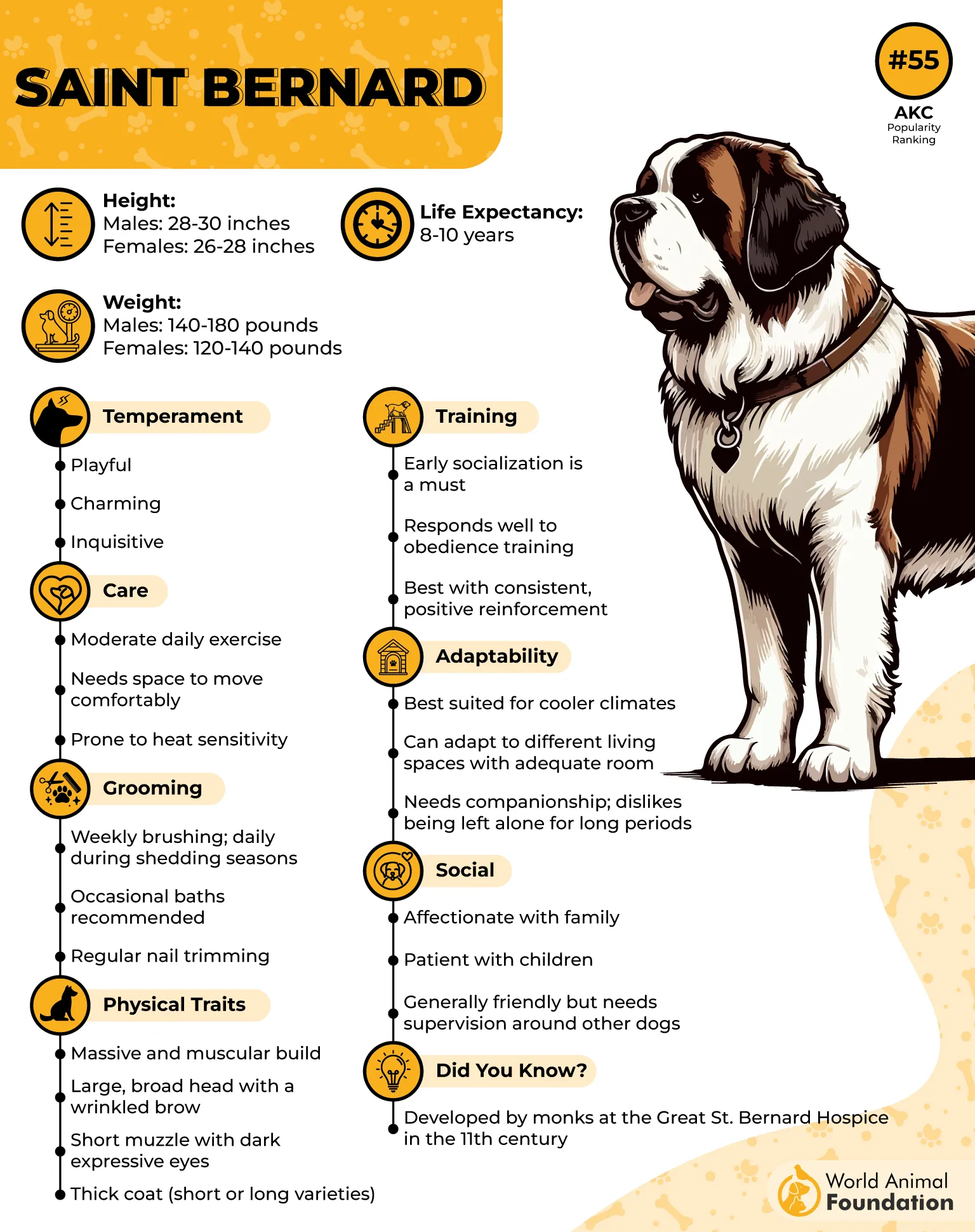
Often working in pairs, these dogs show a remarkable understanding of their role: one stays to warm the lost person, while the other heads for help. Their history is deeply related to lifesaving efforts, earning them a place among the most recognized breeds in avalanche response.
|
Trait |
Details |
|---|---|
|
Energy |
Moderate; built for power, not speed |
|
Intelligence |
Instinct-driven; follows scent cues even in deep snow |
|
Unique Trait |
Works in pairs during rescue; excels in cold-weather terrain navigation |
6. Labrador Retriever
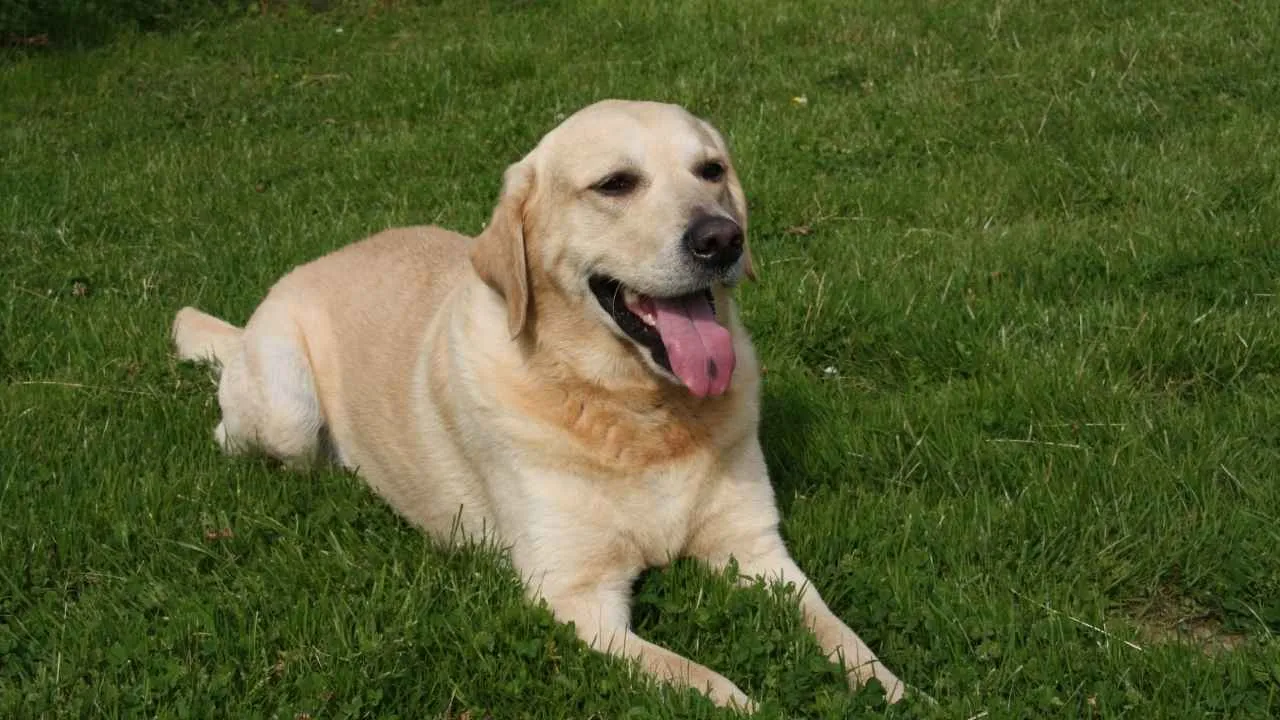
The Labrador Retriever is a powerhouse in search and rescue missions, especially in wet or unpredictable environments. Labradors are part of the sporting group, originally bred for retrieving game from land and water.
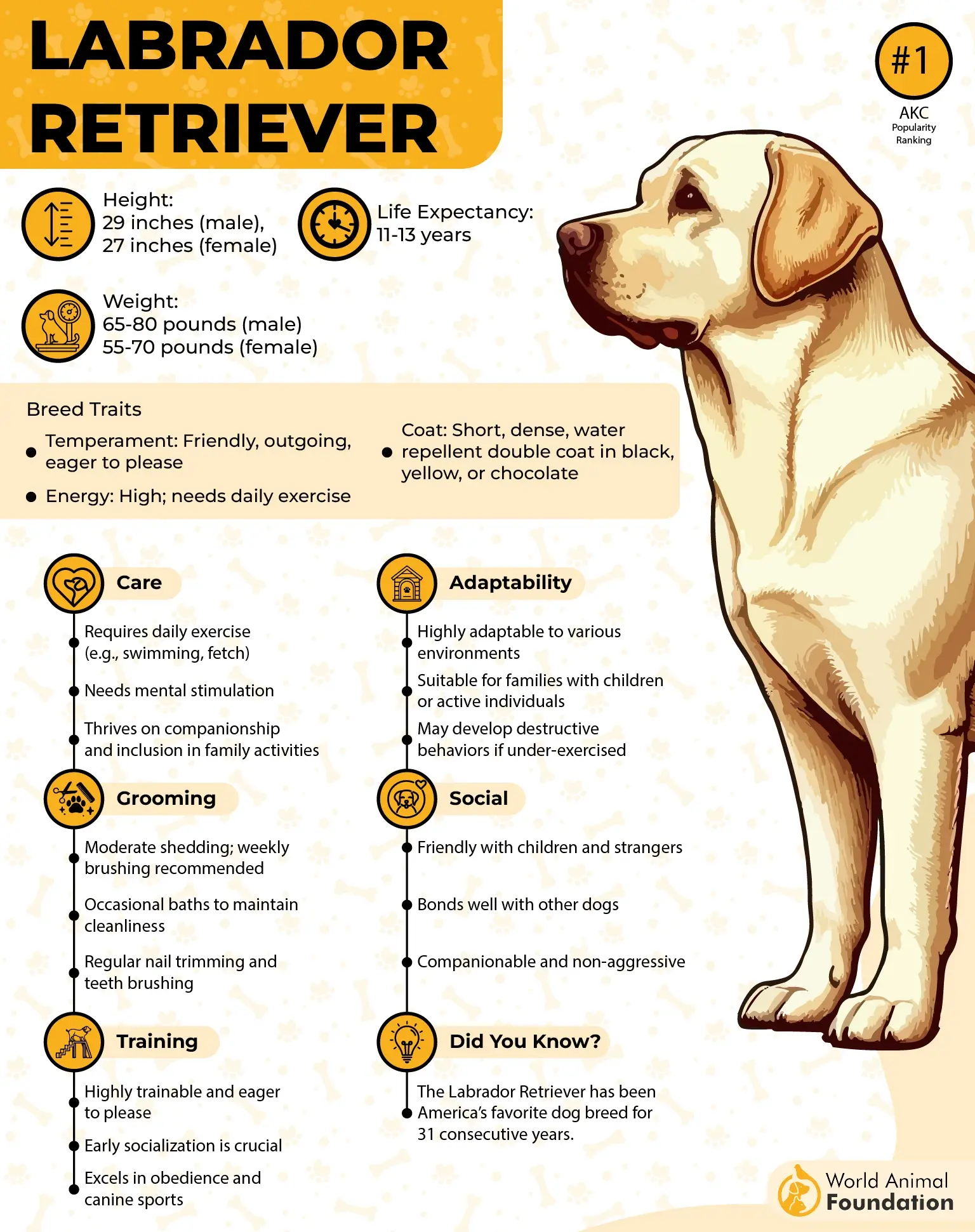
Their highly developed noses can detect subtle scent trails and environmental markers, which play a huge role in navigating back to a location, even if it’s miles away.
Labs are known for their high endurance, smart, and eager-to-please personalities, whilst being affectionate. This makes them highly effective when deployed for locating missing persons across terrains ranging from lakes to forests.
|
Trait |
Details |
|---|---|
|
Bark |
Light, friendly bark; usually used in alert or excitement |
|
Energy |
High; thrives on daily exercise and play |
|
Intelligence |
Responsive and eager, quick to train and retain new tasks |
|
Best For |
Water rescues, detection work, and companion-based SAR |
7. Dutch Shepherd
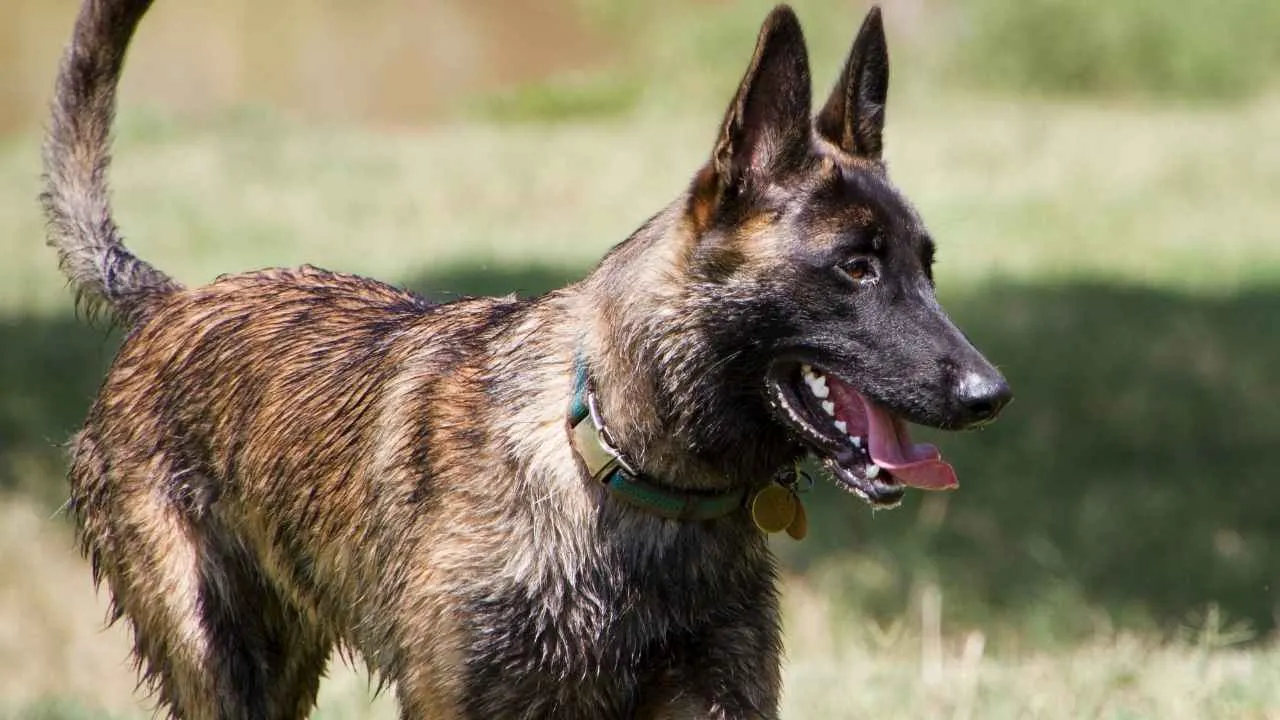
Dutch Shepherds are tactical, independent, and incredibly agile, making them ideal for precision-based search assignments. Originally bred by Dutch farmers, they were developed to adapt to unpredictable environments and serve multiple roles—from guarding livestock to pulling carts.
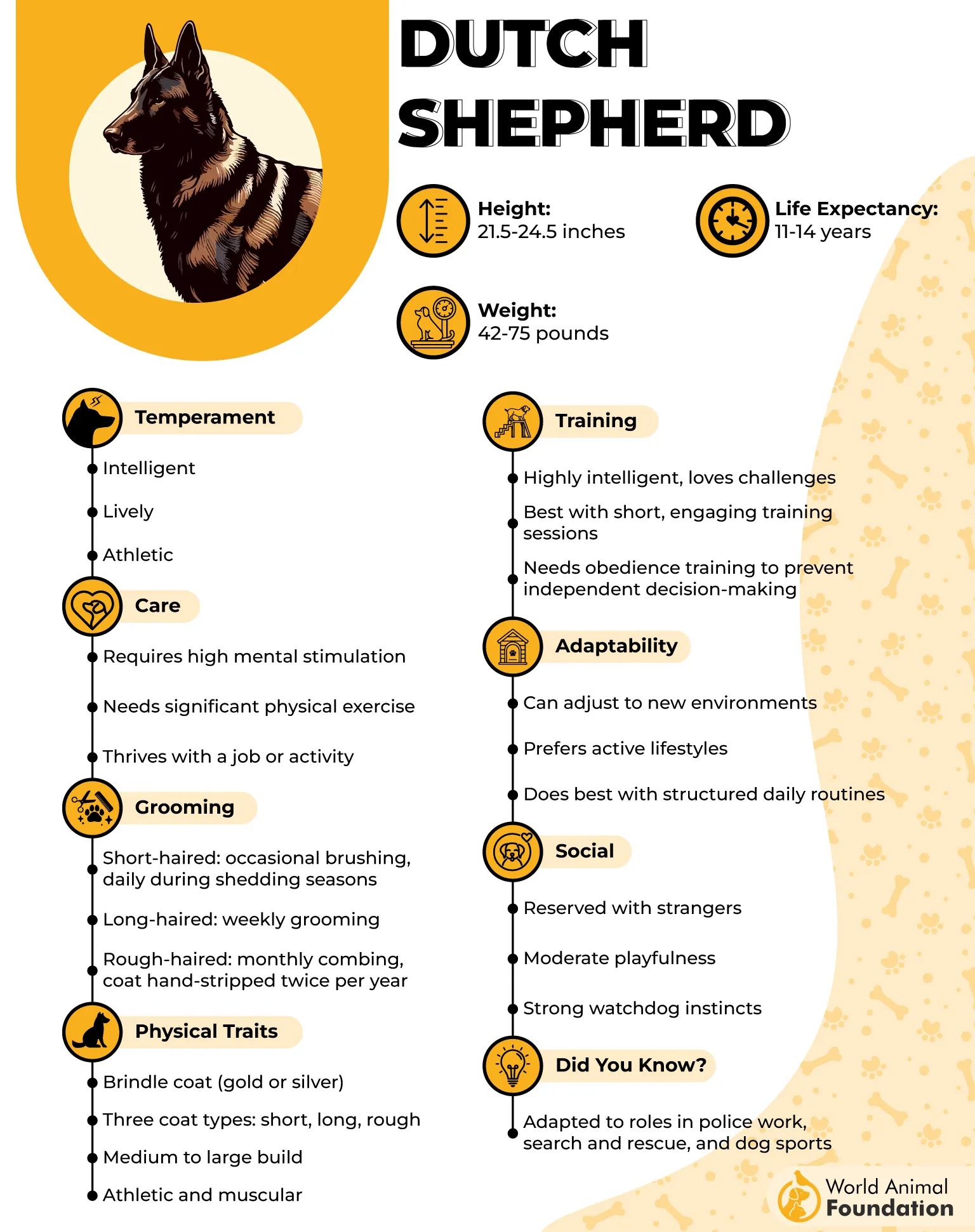
Today, their natural alertness and sharp directional sense make them reliable in bomb detection and locating buried victims.
Unlike other working dogs, they’re less reactive and more thoughtful, able to assess surroundings with quiet confidence. Whether in urban patrol or wilderness tracking, these pooches respond quickly, showing a level of restraint and discipline that makes them trusted assets in both police and military roles.
|
Trait |
Details |
|---|---|
|
Bark |
Controlled and purposeful; used to signal or alert |
|
Energy |
Very high; needs advanced physical tasks and challenges |
|
Intelligence |
Tactical thinker; excels in decision-heavy field work |
Conclusion
In conclusion, the best dog for search and rescue work isn’t just about strength or stamina—it’s about an innate sense of purpose, a keen sense of surroundings, and a sharp sense of direction. These highly intelligent breeds aren’t just workers; they’re pets, animals, and companions that learn quickly, handle challenges with focus, and bring real protection to those in danger.
What’s most obvious is that these dogs thrive on exercise, mental stimulation, and play, and have the endurance to track over long distances without hesitation. Whether they’re deployed in military efforts or trained to teach younger dogs the way, these recognized trailblazers carry the quiet power of instinct. They may look calm, even gentle, but when it comes to saving lives, their response is immediate—even when others would freeze or feel scared.
If you’re interested in understanding what sets them apart, just watch how they move through the world. These dogs don’t follow—they lead.


